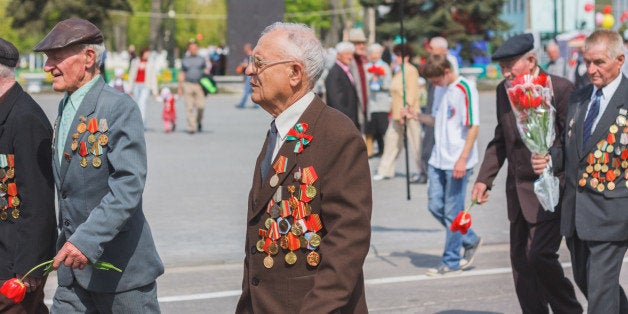
This week we celebrate 22 million living veterans who span generations, conflicts and all U.S. states and territories. Less than eight percent of our country's population, though, has ever worn a uniform, leaving millions of civilians to get to know vets and military families through the news and through interactions in our communities.
Veterans Day seems the right time to educate and inform the American people about who we are by refuting the myths about what veterans and military families are not.
1. Myth: Enlisted vets are less skilled.
All men and women, especially our military's non-commissioned officers (NCOs), have the capacity for greatness. NCOs know how to problem-solve, operate under deadlines (often in the throes of crises) and manage large teams of varying ages and skills while ensuring that multi-million dollar equipment is in fighting order. Skills in the military come not from large lecture halls or specific degrees but from practical application.
My sergeants in Iraq would coordinate deliveries of humanitarian supplies, negotiate with village elders and make sure their troops were combat ready, all while under the threat of enemy contact. And for hiring managers who insist on degrees, in 2010, 93.6 percent of enlisted soldiers had at least a high school diploma, compared to 59.5 percent of America. I'd stake my reputation on the opinion that enlisted soldiers are better educated and more skilled than the U.S. civilians they protect.
2. Myth: Military spouses don't need to work.
This myth dates back to the 1970s, when wives of military service members were far less likely to work outside the home. Rising cost of living, low service member pay and the rising cost of benefits have led to a resurgence in military spouses seeking work. The Department of Defense estimates that 65 percent of military spouses are employed.
Even so, the Military Officers Association of America estimates that 90 percent of female military spouses are underemployed, meaning they possess more education and experience than needed for their jobs. Further, their paychecks are about 38 percent lower than their civilian counterparts By short-selling military spouses, employers overlook the assets that they bring to the table. Chief among them are an ability to establish relationships quickly as well as resiliency and comfort in the face of transition.
3. Myth: The job market for veterans remains bright.
Corporate America and the White House have pledged more than one million jobs for veterans - about two pledged jobs for every unemployed service member of any generation. So why were 573,000 veterans unemployed in 2014? While the job outlook for veterans has notably improved, the Bureau of Labor Statistics reports a sky-high unemployment rate for young veterans (ages 18-24). Last year 16 percent were unemployed, about one-third more than the rate for their civilian peers.
The opposite end of the spectrum is equally challenging. Those over 55 represent 37 percent of the veteran population yet nearly five percent, or 213,000, were unemployed in 2014. If the job market for veterans were truly bright, those numbers would be very different.
4. Myth: Vets and their families have access to free health care.
Like their civilian counterparts, many veterans struggle to secure affordable healthcare for themselves and their families. Approximately 40 percent of veterans qualify to receive healthcare through the Veterans Administration (VA) system. But while many vets are covered, VA hospitals do not serve family members or families of the fallen. Another 5-10 percent of eligible retirees, their families and survivor families get coverage through TriCare, the military's health insurance program. Yet one in 10 veterans under age 65 is uninsured, according to an analysis of the American Community Survey. And the Affordable Care Act, through Medicaid, only covers about half of them.
The rest? They're left to hope that a catastrophic accident or severe illness doesn't come along -- and that's simply an unfair ask of someone brave enough to have worn a uniform for this country.
5. Myth: The end of the wars equates to diminishing needs.
Right now there are about 150,000 members of the military deployed in nearly 150 countries around the world, carrying out missions and safeguarding freedom. Even as the United States draws down its presence in Iraq and Afghanistan, deployment numbers remain high and will not be going down.
What does this mean? The needs of veterans and military families are evolving, and they are most certainly not disappearing. Take, for example, the wife whose spouse was disabled in Afghanistan at age 26. As one of 5.5 million caregivers of veterans in the United States, this spouse will be supporting his or her veteran for another 50-plus years -- and both of them will need assistance. The tails on any wars, especially the post-9/11 ones, are very long.
We simply cannot afford to allow the sea of goodwill for our veterans turn into an ocean of apathy.
